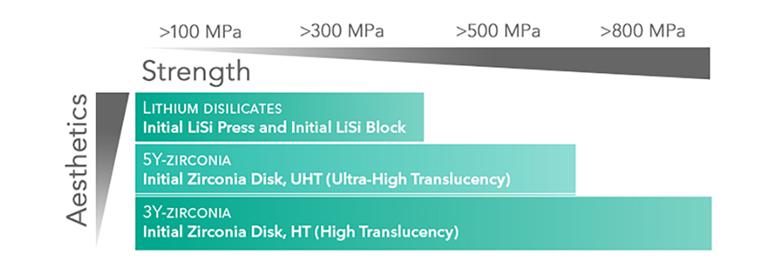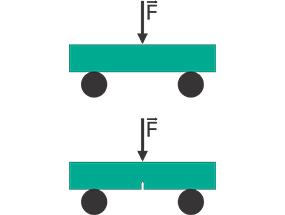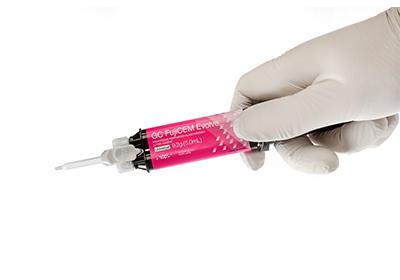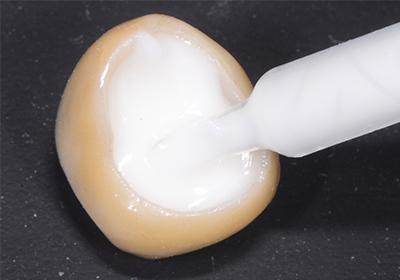
Strong, stronger, strongest…
There is not a single material in dentistry that has all the best requirements to create the perfect restoration. Each type of restorative exhibits some unique properties that are important in a given context. Strength is certainly one of them, but it doesn’t mean the strongest is always the best option. To know which options to choose in each specific situation, it’s very important to know how much strength is required.
Pic: Partial crowns milled from Initial LRF Block

Minimum strength requirements per indication according to ISO 6872
International standardisation
ISO 6872 for ceramic materials is a very important standard in restorative dentistry. This standard gives guidance to the required properties for a ceramic restorative, such as flexural strength and fracture toughness and it has been adopted by important dental associations all over the world. (Table 1)

Flexural strength and fracture toughness
To make deliberate choices, one must understand what the different properties involve. Regarding durability, flexural strength and fracture toughness have traditionally been used to determine appropriate usage.
Flexural strength is measured on pristine, polished samples of material. They indicate the inherent strength of a material in an impeccable state.
Fracture toughness on the other hand, is measured on samples with a deliberately pre-induced, standardised flaw. It reflects the damage tolerance of a material.
Pic: Flexural strength (top) and flexure toughness (bottom) test set-ups.
Strength and cementation
Adhesive cementation of all-ceramic crowns has been linked to improved clinical outcomes. Laboratory studies have shown that applying thin layers of these cements can notably enhance the flexural strength of various all-ceramic crown materials. Several theories have been suggested to explain this strengthening effect, such as the generation of crack closure stresses, potential healing effects on intrinsic flaws, and the formation of a hybrid layer that alters stress distribution around critical defects. Nonetheless, there's still speculation surrounding the exact mechanism behind this strengthening process. Materials with high strength and high toughness can be luted conventionally (e.g. with FujiCEM Evolve) if the retention and resistance shape is sufficient. Materials that have a flexural strength less than 300 MPa should always adhesively be bonded (e.g. with G-CEM ONE).



Cementation of a zirconia crown with FujiCEM Evolve
While strength is the most sought-after requirement of a restorative, other factors also play a role. To select the best materials in each situation, one must understand the requirements.
- International Organization for Standardization. ISO 6872:2015 Dentistry – Ceramic materials https://www.iso.org/standard/59936.html
- Burke FJ, Fleming GJ, Nathanson D, Marquis PM. Are adhesive technologies needed to support ceramics? An assessment of the current evidence. J Adhes Dent. 2002;4(1):7-22.
- Fleming GJ, Addison O. Adhesive Cementation and the Strengthening of All-Ceramic Dental Restorations. J Adhes Sci Technol 2009; 23(7-8):945-959.

